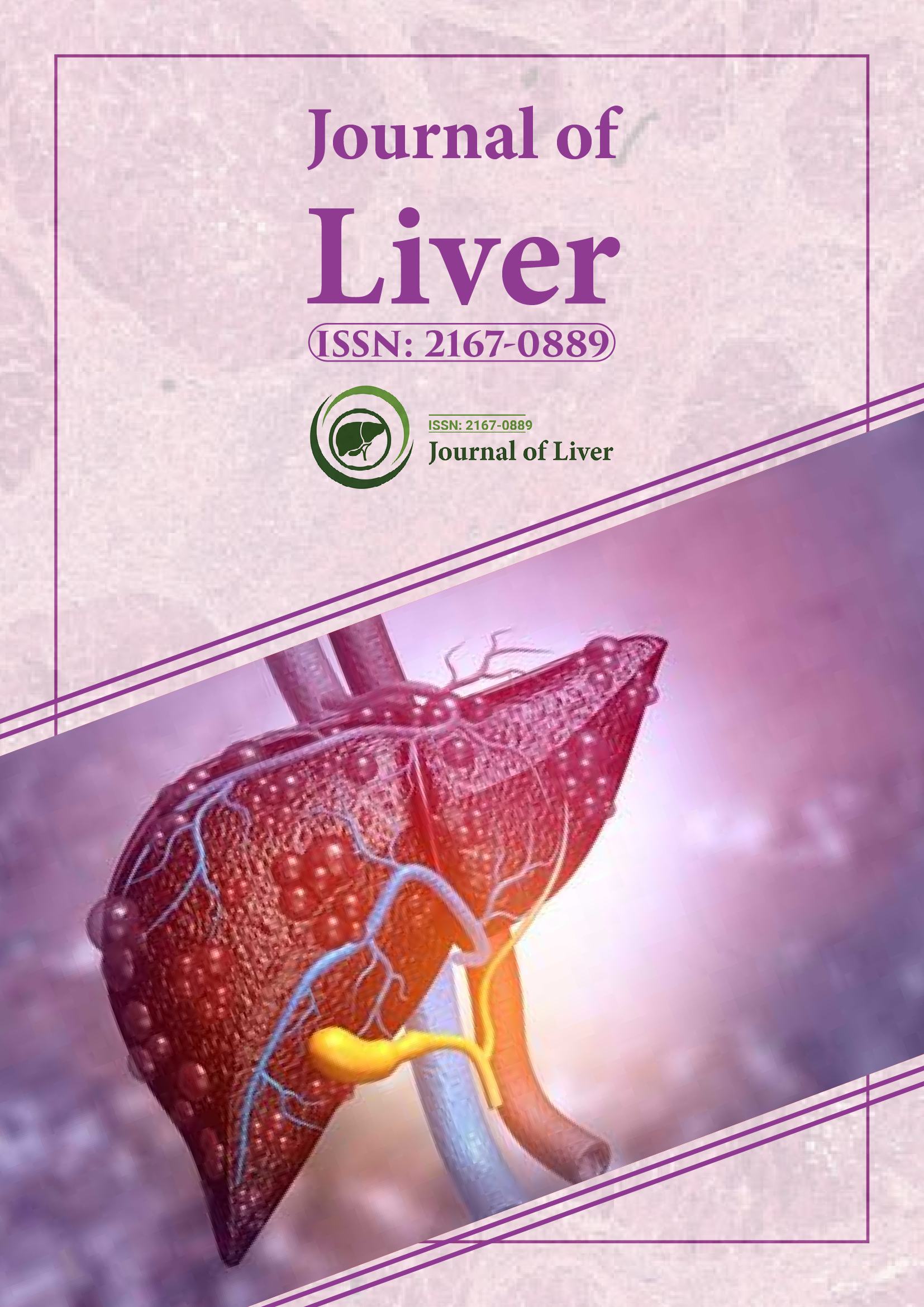Indexed In
- Open J Gate
- Genamics JournalSeek
- Academic Keys
- RefSeek
- Hamdard University
- EBSCO A-Z
- OCLC- WorldCat
- Publons
- Geneva Foundation for Medical Education and Research
- Google Scholar
Useful Links
Share This Page
Journal Flyer

Open Access Journals
- Agri and Aquaculture
- Biochemistry
- Bioinformatics & Systems Biology
- Business & Management
- Chemistry
- Clinical Sciences
- Engineering
- Food & Nutrition
- General Science
- Genetics & Molecular Biology
- Immunology & Microbiology
- Medical Sciences
- Neuroscience & Psychology
- Nursing & Health Care
- Pharmaceutical Sciences
Opinion - (2025) Volume 14, Issue 2
Patterns in studies of brain complications associated with liver disease
Peter Haag*Received: 26-May-2025, Manuscript No. JLR-25-29527 ; Editor assigned: 28-May-2025, Pre QC No. JLR-25-29527 (PQ); Reviewed: 11-Jun-2025, QC No. JLR-25-29527 ; Revised: 18-Jun-2025, Manuscript No. JLR-25-29527 (R); Published: 25-Jun-2025, DOI: 10.35248/2167-0889.25.14.258
Description
Hepatic Encephalopathy (HE) is a neuropsychiatric complication of cirrhosis characterized by cognitive impairment, motor disturbances and altered consciousness. Its multifactorial pathogenesis involves ammonia accumulation, neuroinflammation, oxidative stress and gut-liver-brain interactions. The past decades have seen substantial growth in HE researches, encompassing basic science, clinical studies and therapeutic innovations. Bibliometric and knowledge mapping approaches allow systematic evaluation of publication patterns, thematic clusters and research evolution. This review analyzes trends in HE pathogenesis studies, highlights key mechanisms and identifies emerging directions in diagnostics and therapy.
Hepatic encephalopathy represents a spectrum of neurological dysfunction in patients with advanced liver disease, particularly cirrhosis and portal hypertension. Clinical manifestations range from mild cognitive decline and subtle psychomotor deficits to severe confusion, stupor and coma. The disorder poses a major burden on healthcare systems, reducing patient quality of life and increasing mortality.
Evolution of research focus
The trajectory of HE researches reflects a gradual shift from a single-toxin model toward complex multifactorial frameworks. Initial research centered almost exclusively on ammonia toxicity. However, inconsistencies in clinical outcomes prompted an investigation into complementary mechanisms. Neuroinflammation and oxidative stress were increasingly recognized as amplifiers of ammonia’s effects. The concept of the gut-liver-brain axis introduced a systemic perspective, linking intestinal microbiota alterations with increased ammonia production, endotoxin release and inflammatory signaling. Recent studies integrate these perspectives into unified models that combine metabolic, immunological and neurochemical dimensions. This evolution mirrors advances in experimental tools, including high-resolution imaging, multi-omics and computational modeling, which support more integrative approaches to understanding HE pathophysiology.
Ammonia metabolism
Ammonia metabolism remains the cornerstone of HE pathogenesis. In cirrhosis, impaired hepatic urea cycle function and portosystemic shunting reduce ammonia clearance. Excess ammonia crosses the blood-brain barrier and accumulates in astrocytes. The conversion of ammonia to glutamine increases osmotic stress, leading to astrocytic swelling and cerebral edema. Ammonia also disrupts neurotransmission by altering glutamatergic and GABAergic balance, impairing synaptic plasticity and cognitive processing. Studies employing magnetic resonance spectroscopy have correlated brain glutamine levels with HE severity. Rodent models confirm that ammonia administration induces learning and memory deficits, providing mechanistic insights.
Neuroinflammation and oxidative stress
Neuroinflammation has emerged as a critical amplifier of ammonia-induced neurotoxicity. Elevated systemic cytokines activate microglia, leading to neuroinflammatory cascades that impair neuronal communication. Clinical studies have correlated inflammatory cytokine levels with neurocognitive impairment in cirrhotic patients. Oxidative stress compounds the injury. Reactive oxygen and nitrogen species generated during inflammation and impaired mitochondrial function damage lipids, proteins and DNA. This oxidative imbalance further weakens neuronal resilience, contributing to memory and motor dysfunction. Interventions that modulate cytokine activity or enhance antioxidant defenses show potential in preclinical models.
Gut-liver-brain axis
The gut microbiota has become a focal point in HE pathogenesis research. Dysbiosis in cirrhosis increases the abundance of ammonia-producing and endotoxin-generating bacteria. Intestinal barrier dysfunction allows microbial products, including lipopolysaccharides, to enter systemic circulation, fueling hepatic and cerebral inflammation. Probiotics, prebiotics and antibiotics such as rifaximin are widely studied for their capacity to reshape the microbiota, reduce ammonia production and attenuate inflammatory signaling. Experimental models demonstrate improvements in cognitive function with microbiota-targeted therapies. Ongoing clinical trials explore strategies such as fecal microbiota transplantation to restore gut ecosystem balance.
Cerebral edema and neuroimaging
Cerebral edema, ranging from mild astrocytic swelling to overt intracranial hypertension, is a defining feature of severe HE. Advanced neuroimaging techniques have provided noninvasive tools to detect structural and metabolic changes. Magnetic resonance spectroscopy quantifies brain metabolites, including glutamine and myo-inositol, reflecting ammonia burden and osmotic alterations. Diffusion tensor imaging and functional MRI reveal disrupted white matter integrity and impaired network connectivity. These tools not only aid in diagnosis but also serve as biomarkers for monitoring treatment response.
Clinical translation
The recognition of HE as a multifactorial condition has influenced clinical practice. Management strategies now extend beyond ammonia control to include microbiome-directed therapies and inflammation modulation. Noninvasive diagnostic tools, including MRI and circulating biomarkers, assist in identifying patients at risk of progression and tailoring interventions. Integrated care models emphasize early detection, consistent monitoring and multidisciplinary treatment. Incorporating psychosocial support and addressing comorbidities such as malnutrition and infection are essential for improving outcomes.
Citation: Haag P (2025). Patterns in Studies of Brain Complications Associated with Liver Disease. J Liver. 14:258.
Copyright: © 2025 Haag P. This is an open-access article distributed under the terms of the Creative Commons Attribution License, which permits unrestricted use, distribution, and reproduction in any medium, provided the original author and source are credited.
